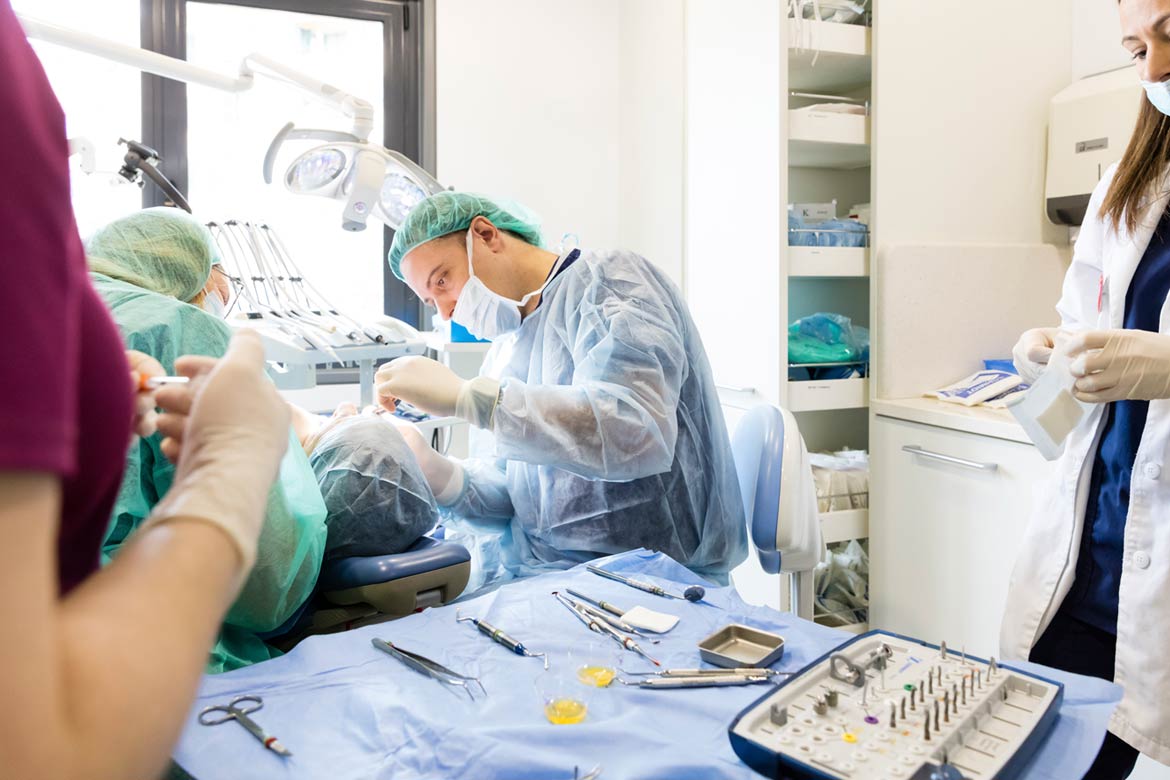Dental bone grafting in Mallorca
Do you need a dental implant?
Ask us for an appointment with free examination and diagnosis.
Whether you wish to start treatment or request information, you are in the right place. Leave us your details and we will contact you within three hours.

What is dental bone grafting?
Bone Graft Technique
When a patient has insufficient maxillary or mandibular bone due to infections, periodontitis, or wear and tear, it is necessary to perform a bone graft before placing a dental implant. This bone regeneration technique allows:
- Preserve the alveolar ridge, i.e. the space left by a tooth.
- To vertically and/or horizontally increase the alveolar ridge.
- Correct bone defects around implants.
- Perform a sinus lift, i.e. of the upper bone.
In short, with the bone regeneration grafting technique we promote the formation of new bone to achieve optimum conditions for the placement of the implant in the maxilla and mandible.
Postoperative and recovery time for bone regeneration for implants
After a bone regeneration procedure for implants, it is common to experience discomfort such as pain, swelling or minor bleeding. To ensure a successful recovery, it is crucial to follow the specialist’s recommendations:
- Take prescribed medication and apply ice to the treated area.
- Avoid dairy products, alcohol, coffee, and spicy foods.
- Avoid eating or drinking for the first 2 hours.
- Sleep with your head elevated and avoid strenuous physical activity.





